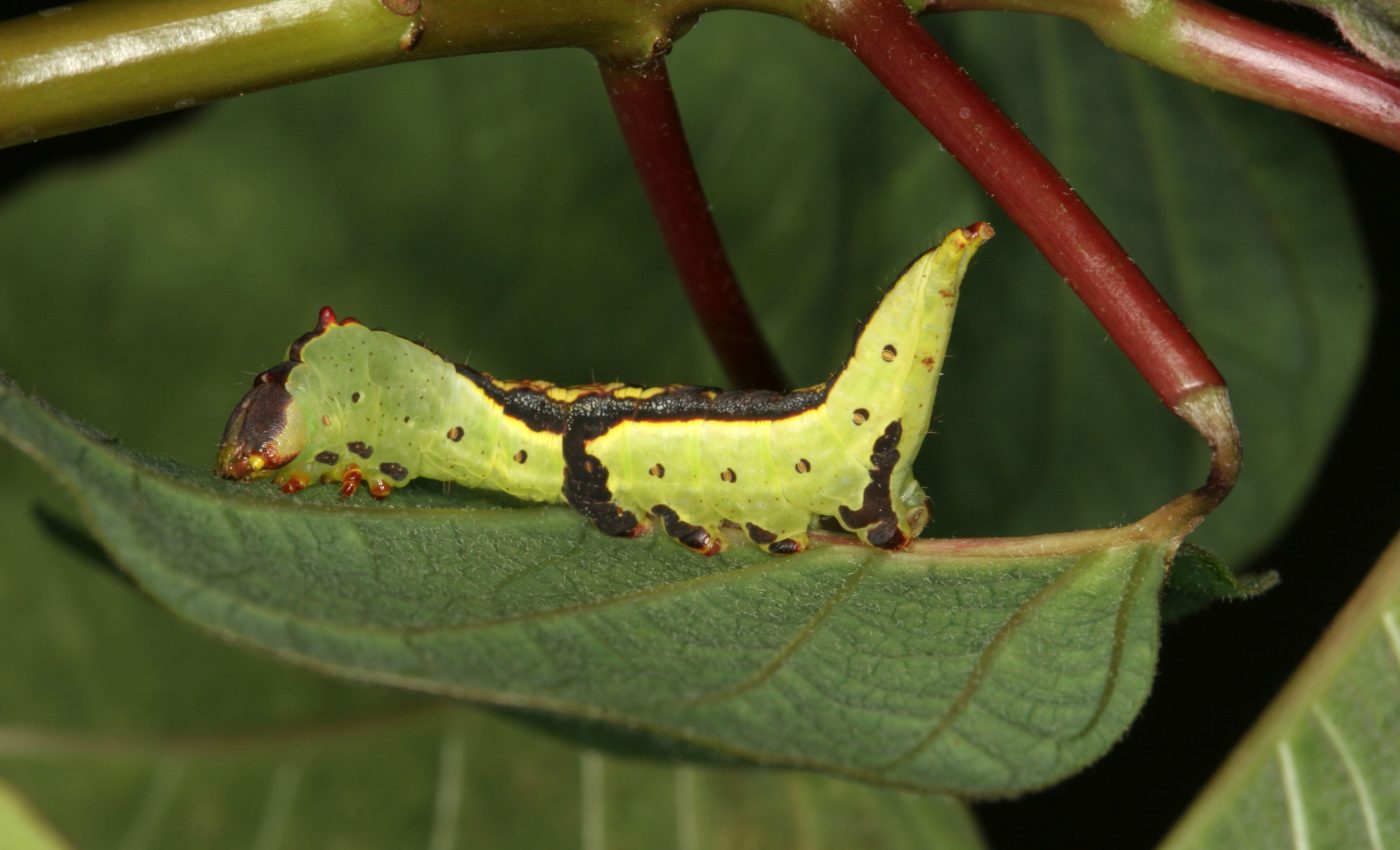
Caterpillars use an anti-predator defense when feeding on sticky plants
The moth caterpillar (Theroa zethus) has evolved an anti-predator defense when feeding on sticky and toxic plants.
Researchers from the University of Central Arkansas discovered that the caterpillar secretes an acid from special glands which prevents plants like the poinsettia from secreting latex stored in special canals in their leaves.
This latex poisons herbivores that feed on the plant like the caterpillar.
In a new study, published in the journal PLOS ONE, the researchers detail how the caterpillar can disarm the plant.
The caterpillar bathes the leaf stem in an acidic secretion made up of formic and butyric acids which deform the plant’s cell walls.
The caterpillar first scrapes at the stem with its mandibles and compresses the leaf stem while it works.
The researchers filmed these different behaviors and defenses and then simulated them in a lab setting to see if just the acid or the scraping prevented latex flow.
Using sandpaper and binder clips, the researchers were able to replicate these behaviors and successfully prevent latex flow in the plant, which means that it’s not just the acid that helps disarm the plant.
Out of six other moth species included in the study, only Theora zethus doused the plant leaf stem in acid.
“To understand if a plant is vulnerable to insect feeding, one needs to consider not just the defenses of the plant, but also the capabilities of the insect,” said David Dussourd, the lead author of the study. “The combination of behavioral manipulation and acid secretion allows the caterpillar to disarm the plant often without contacting any latex exudate.”
—
By Kay Vandette, Earth.com Staff Writer
Main Image Credit: Dussourd et al, 2019














